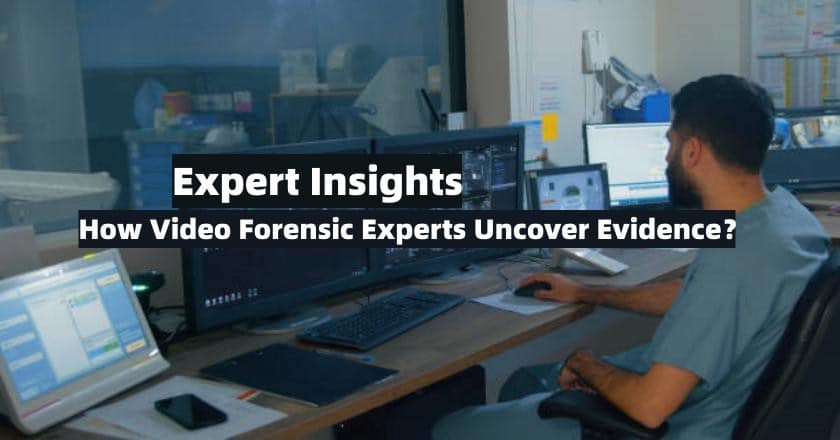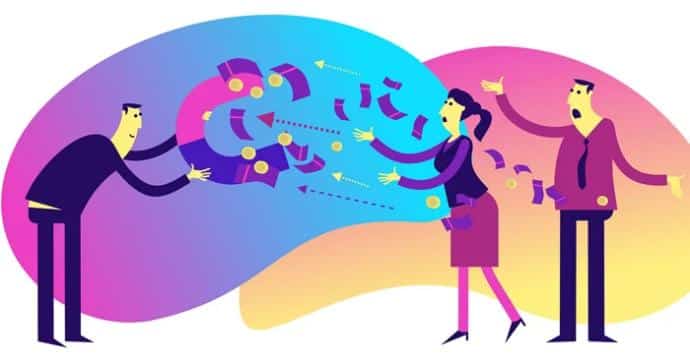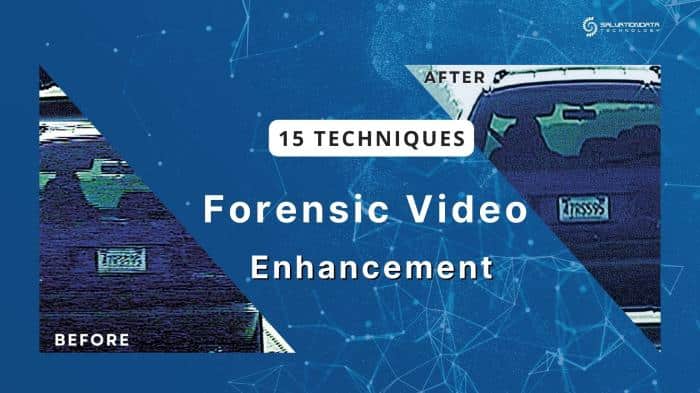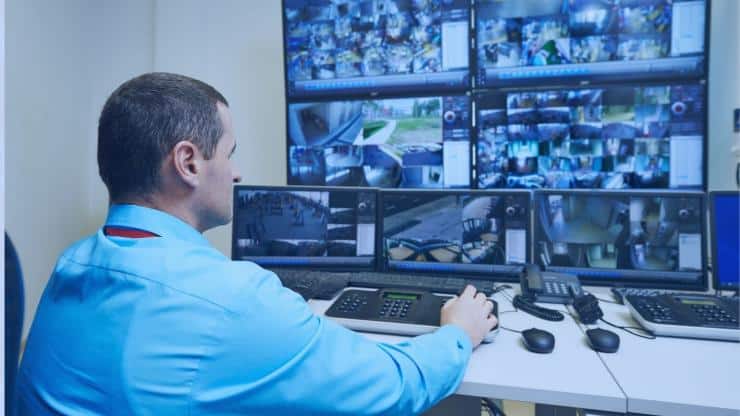How Did Video Forensic Experts Reveal Hidden Evidence?

-
Content
- Intro
- Understanding Deceptive Techniques
- Techniques Used by Video Forensic Experts
- Case Studies and Examples
- Challenges and Considerations
- Conclusion
-
Content
- Intro
- Understanding Deceptive Techniques
- Techniques Used by Video Forensic Experts
- Case Studies and Examples
- Challenges and Considerations
- Conclusion
Intro
A video forensic expert plays a crucial role in the complex digital forensics investigations, particularly when it comes to figuring out the levels of deceit that may be present in video evidence. To ensure the integrity of the evidence presented in court, these professionals examine video recordings using a combination of technical expertise and analytical skill.
The significance of forensic video analysis in legal contexts cannot be overstated. By enhancing and analyzing video footage, forensic experts are able to identify subtle manipulations or alterations that could easily go unnoticed by the untrained eye. This capability is vital in cases where video evidence could determine the outcome of serious legal disputes. Whether it’s a slight distortion in a video clip that suggests tampering or a hidden detail that could prove someone’s innocence, the insights provided by video forensic experts are often key to unraveling complex cases.
Understanding Deceptive Techniques
When a film is purposefully manipulated or altered to mislead viewers or offer false information, it is referred to as deception in forensic analysis. A recorded event’s context or conclusion may be changed from basic edits to intricate computer alterations. Since the veracity of video evidence may have a substantial impact on court decisions, the significance of detecting deceit is crucial in legal disputes, insurance fraud, and criminal investigations.
Common Deceptive Techniques in Video Evidence
- Frame Removal or Addition:Removing or adding frames from a movie to change the chronological order of events is one of the most basic but powerful tricks. This may lead to erroneous perceptions of the order or timing of occurrences by making acts seem to happen quicker or slower than they really occurred.
- Image Manipulation:This involves tampering with video pictures, such faces or license plates, which may be improved or hidden to conceal identities or falsely accuse someone. Methods including pixelation, blurring, and digital painting are often used.
- Compositing and Layering:Compositing involves merging video clips from different sources to create a scene that never occurred. Layering similarly integrates images or video layers to conceal elements of the original footage, which can drastically change the perceived action in the video.
- Lighting and Shadow Engineering:Key elements in a video may be added or removed by adjusting the lighting and shadows. For crisp video recording, proper lighting is crucial; dishonest tactics may entail adjusting contrast and brightness to hide details or fabricate false settings.
- Interpolation for Fabrication:With advanced software, it is possible to create movements or actions that the characters in the film did not originally carry out by adding additional frames to an already-existing video.
Forensic video analysts must discover and prove these deceptions in court. Identifying and establishing misleading video alterations helps video forensic professionals protect the truth and ensure justice is delivered based on genuine evidence. Trust in digital forensic investigations and the court system rests on this honesty.
Techniques Used by Video Forensic Experts
1. Specialized Tools and Software for Video Analysis
Video forensic experts use specialized equipment and software to improve, analyze, and recover footage. These technologies help reveal the truth in video data and excel at managing digital video format difficulties:
- Forensic Video Analysis Software:Essential tools include Avid Media Composer, Adobe Photoshop for video, and specialist forensic software like Amped FIVE. These apps provide frame-by-frame analysis, which is essential for seeing even the smallest elements in the video.
- Enhancement Software: This includes software that may sharpen blurry parts,enhance visibility in dimly light environments, and clarify hidden or pixelated pictures. Commonly used methods include contrast enhancement, noise reduction, and interpolation.
- Codec Analysis Tools: These programs check video compression algorithms to see whether it was modified since recording.
- Metadata Analyzers:Metadata in video files reveal its history and legitimacy. Tools that evaluate this data may expose the video’s source, alterations, and software.
- Digital Forensics Services: These services go beyond video inspection to recover and authenticate data across digital platforms.
2. Methodologies to Detect Alterations in Video Footage
Video forensic experts employ various methodologies to detect manipulations in video footage, ensuring the integrity and authenticity of the evidence.
- Temporal Analysis: Examining the timing and order of video frames is necessary for this. Experts search for irregularities like extra information or missing frames that might indicate manipulation.
- Error Level Analysis:This method calculates the faults in digital picture compression. It may be used to identify edited or modified portions of a video, since these sections usually exhibit different error levels than unaltered ones.
- Pixel-Based Techniques: Using pixel value constancy across frames, professionals can spot artificial changes. Pixel array discrepancies generally imply tampering.
- Digital Image Forensics:Detecting scene clones or changes using algorithms. This approach is extremely successful at detecting manipulated video material that was added or deleted.
- Surveillance Video Analysis:Specialized techniques are applied to surveillance video to extract usable information from often low-quality or dynamically changing scenes, crucial in both security and legal contexts.
Case Studies and Examples
1. Influential Cases in Video Forensics
- The Boston Marathon Bombing (2013): Video forensic experts were instrumental in the investigation following the Boston Marathon bombing. Analysts sifted through hundreds of hours of surveillance and personal video footage to identify the Tsarnaev brothers among the crowd. Video enhancement techniques clarified images obscured by the chaotic scene, and digital forensics tools helped synchronize various video timelines that were crucial in reconstructing the events leading to the attack.
- The Rodney King Beating (1991): This case was pivotal in demonstrating the power of video evidence in legal disputes involving police brutality. Forensic video analysts used frame-by-frame analysis to highlight the excessive force used by police officers. Techniques such as video enhancement and contrast adjustment made crucial details visible that were not clear in the original footage, influencing the public and legal outcomes significantly.
- Fraudulent Insurance Claims: Numerous cases of insurance fraud have been exposed with the help of video forensic tools. In one famous case, video forensics showed the claimant engaging in physical activities that their alleged injury should have prevented, refuting the claimant’s injury accusations. To verify the authenticity of the film, video forensics experts used metadata analyzers, and also used pixel-based algorithms to look for any indications of alteration.
2. Techniques Used and Their Effectiveness
In these cases, the application of various forensic techniques underlined the importance of technical expertise in interpreting video evidence:
- Frame-by-Frame Analysis:This method was widely employed in the Rodney King case, enabling specialists to record minute movements that were crucial for determining how much force the police had used.
- Enhancement and Contrast Adjustments:These techniques were crucial to the Boston Marathon Bombing investigation because they allowed investigators to identify suspects in a crowded crowd by bringing to light previously hidden information.
- Metadata and Pixel Analysis: Analyzing video metadata and pixel uniformity was crucial in insurance fraud cases as it confirmed the timeliness and legitimacy of the film and helped disprove false claims.
These technologies expose hidden realities, demonstrating the need of video forensic specialists in current court systems. Video forensic experts use powerful digital forensic tools and thorough research methods to clarify and support litigation using video evidence.
Challenges and Considerations
1. Challenges in Detecting Deception
Experts in video forensics have considerable difficulties when identifying deceit in video evidence. The identification of modifications becomes more challenging as digital manipulation methods get more sophisticated. These are a few of the main difficulties encountered:
- Advanced Editing Software:One of the ongoing challenges is the lack of high-quality video editing tools that may provide alterations that are almost invisible. These tools can smoothly modify pictures inside films, change frame rates, and adjust timestamps.
- Volume of Data:There is now an enormous quantity of video evidence that may be examined during an inquiry because to the widespread use of digital cameras and mobile devices. Finding pertinent evidence after sorting through massive amounts of data requires a lot of effort and resources.
- Compression Artifacts:Video compression may generate distortions that hinder analysis and hide important features. It might be challenging to ascertain the video’s initial condition since these artifacts can imitate or conceal alterations.
2. Ethical Considerations in Video Analysis
Important ethical issues are brought up by the use of video analysis in court hearings, and these issues need to be addressed in order to preserve the fairness of the legal system:
- Privacy Concerns:Video enhancement might expose sensitive information not seen in the original footage. Privacy and video evidence ethics are at stake.
- Bias and Interpretation:There is a possibility that video forensic specialists may be prejudiced, either knowingly or unwittingly. This may influence how evidence is understood and presented in court. It is critical to ensure that video analysis is performed objectively and by trained specialists.
- Dependence on Technology:Video evidence is sometimes considered infallible. Video forensics tools have limits and faults like any technology. Miscarriages of justice may result from overreliance on technology without human supervision.
Video forensic experts must follow tight standards of practice and update their methods to stay up with technology advances to overcome these obstacles and ethical problems. To promote fairness and justice, all parties in judicial procedures should be informed about the methods utilized and their limits. This careful technique is necessary to retain video evidence’s credibility in revealing the truth.
Conclusion
In summary, video forensic experts play a critical role in judicial investigations. Forensic video analysis is a fundamental component of contemporary legal systems because of its capacity to analyze and comprehend video material, guaranteeing that no information is missed. The confidence in video evidence is justified as it keeps bringing to light facts that would otherwise go unnoticed, supporting justice and honesty in court proceedings around the globe.





